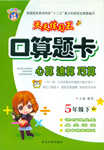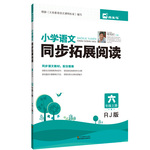题目内容
B. besides
C. however
D. except

 口算心算速算应用题系列答案
口算心算速算应用题系列答案 同步拓展阅读系列答案
同步拓展阅读系列答案
| |||||||||||||||||||||||||||||||||||||||||||||||||||||||||||||||||||||||||||||||||||||||||||||||||||||||||||||||||||||||||||||||||||||||||||||||||||||||||||||||||||||||||||||||||||||||||||||||||||||||||||||||||||||||||||||||||||||||||||||||||||||||||||||||||||||||||||||||||||||||||||
“Buy-A-Something” Campaign
One way to request for general donations is to tie it into a campaign like “Buy-A-Brick to Help Build a School in Bolivia”. Make sure you have some literature to give people as well as a registration form(登记表) that includes name, address, and how many bricks the person purchased.
University Funds
If you are a student, one major source of funding is your own college or university. Many school clubs can raise a certain amount of funds through student activities. See if your club is suitable.
Letter Writing
One of the most effective ways of raising money is to do a letter campaign to as many relatives, friends, former teachers, etc. as possible. Sending a detailed letter to over 100 friends and relatives explaining the program and what you hope to accomplish while you’re on it will help you reach your goal.
Parties, Dances, Music
Use the “Who Do You Know” principle. Do you have a friend in a band? Do you know the owner of a bar or restaurant? Some simple events include playing in a band at a club, and your group gets the cover charge or a percentage of the drink sales.
Exhibitions
This is limited to people with professional art genius. If you are an artist, you can ask friends to help you hold exhibitions and donate your profit to charity or give people who need financial help.
Note: Please remember there are some people who are not so lucky as we are and it’s our duty to help them.
1. . What is the best title for the passage?
|
A.Activities in your spare time |
B.Ways to raise more |
|
C.What can you do? |
D.Holding exhibitions |
2. . What is the “Who Do You Know” principle?
|
A.Involve people you know in your activity. |
|
B.Try to know more people. |
|
C.Never get in touch with strangers. |
|
D.Always play with people you know. |
3. Which is the best way for Albert, a pianist in a small band, to raise money?
|
A.Exhibitions. |
B.Parties, Dances, Music. |
|
C.“Buy-A-Something” Campaign. |
D.University Funds. |
4. What will the money collected be used for?
|
A.Some important architects. |
B.People who need financial help. |
|
C.Festivals like Valentine’s Day. |
D.People with professional art genius. |